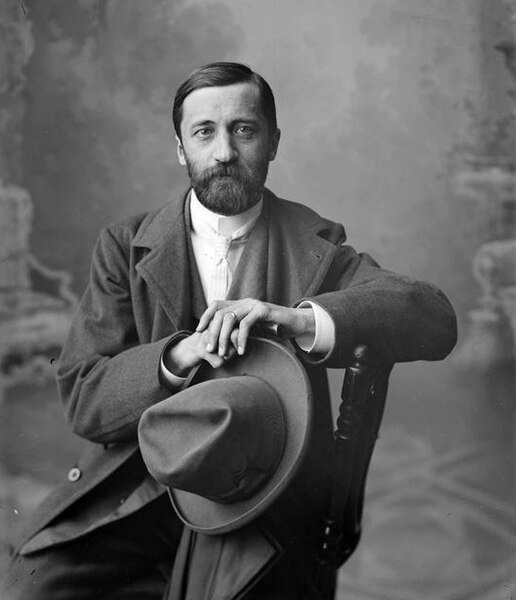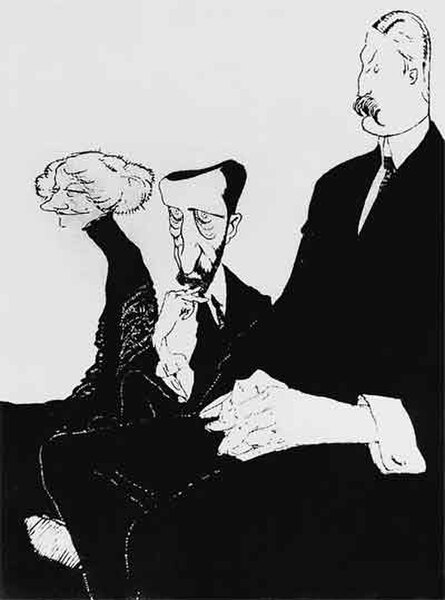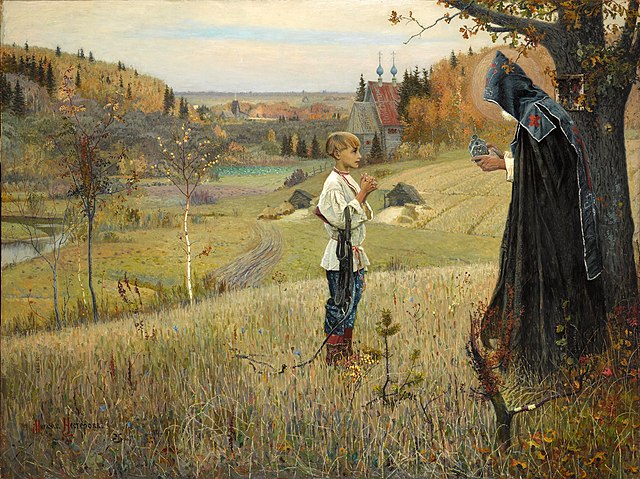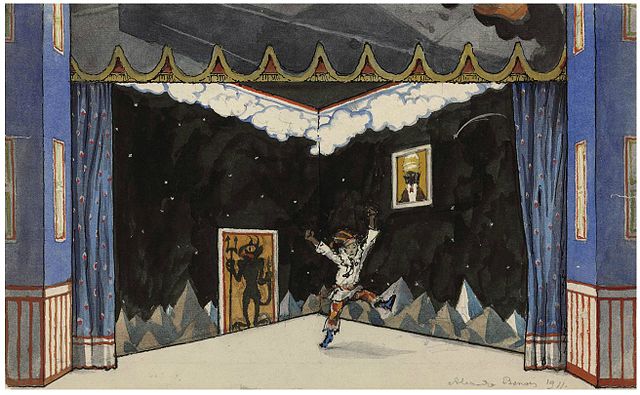Dmitry Sergeyevich Merezhkovsky was a Russian novelist, poet, religious thinker, and literary critic. A seminal figure of the Silver Age of Russian Poetry, regarded as a co-founder of the Symbolist movement, Merezhkovsky – with his wife, the poet Zinaida Gippius – was twice forced into political exile. During his second exile (1918–1941) he continued publishing successful novels and gained recognition as a critic of the Soviet Union. Known both as a self-styled religious prophet with his own slant on apocalyptic Christianity, and as the author of philosophical historical novels which combined fervent idealism with literary innovation, Merezhkovsky became a nine-time nominee for the Nobel Prize in literature, which he came closest to winning in 1933. However, because he was close to the Nazis, he was virtually forgotten after World War 2.
Dmitry Merezhkovsky
Merezhkovsky in 1890s. Portrait by Ilya Repin
Gippius and Volynsky, 1890s
Troyebratstvo (Gippius, Merezhkovsky and Filosofov) in the early 1910s. Caricature by Re-Mi (Nikolai Remizov)
Russian symbolism was an intellectual, literary and artistic movement predominant at the end of the 19th and beginning of the 20th century. It arose separately from West European symbolism, and emphasized defamiliarization and the mysticism of Sophiology.
Alexandre Benois, Illustration to Alexander Pushkin's The Bronze Horseman, 1904. The Russian capital was often pictured by symbolists as a depressing, nightmarish city.
Vsevolod Meyerhold in his production of Alexander Blok's Puppet Show (1906)
Mikhail Nesterov's painting The Vision of the Youth Bartholomew (1890) is often considered to mark the inauguration of the Russian Symbolists.
Alexandre Benois designed symbolist sets for Stravinsky's Petrushka in 1911.








